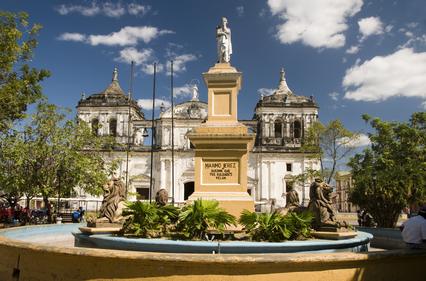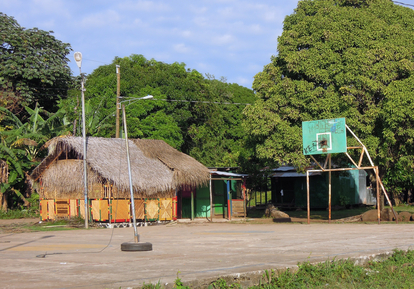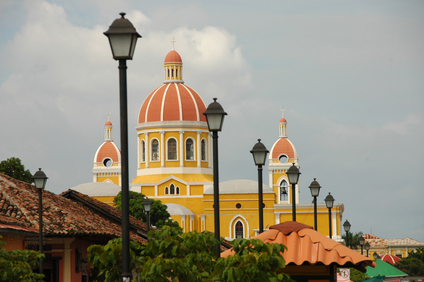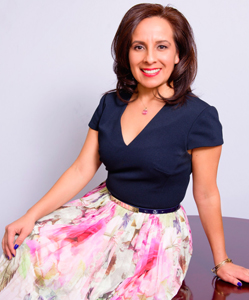General Statistics of Nicaragua

Nicaragua is located in Central America. It shares its borders with Honduras on the north side and with Costa Rica on the south. In addition, it is sandwiched between two huge bodies of water; the Caribbean Sea to the east and the North Pacific Ocean on the west.
Nicaragua was named after a powerful aboriginal chief, whose name was Nicarao who lived in Nicaraocali during the time of the Spanish conquerors. Today that location is known as the city of Rivas. In the Arawak language, this place means “next to the water.”
It is one of the poorest countries in Central America and has much underemployment and poverty amongst the population. According to the United Nations Development Program, almost half of the population in this country lives below the poverty line. In spite of this, the people of Nicaragua are still hopeful and very wonderful and accommodating people.
During the 1980s, much of the country’s infrastructure was damaged due to the civil unrest between the Contras (backed by the U.S.) and the Sandinistas. Inflation was at about a 30% rate during that time. Due to political workings, the United States imposed a trade embargo in 1985 upon this small nation and inflation continued to skyrocket further. Eventually the inflation rate would increase to 13,000% in 1988, one of the highest in these regions. Today, the country struggles to recover from all the things that hit it one after another; however, tourism has become a possible salvation from poverty.
In the 1980s, this was not considered a place to travel, but today it has become a hotspot for many people across the world. Nicaragua offers beautiful landscapes, beaches, lakes, volcanoes, and wildlife. This is not to mention the hospitable people, the rich culture, and the great traditions and customs unique to this country. Two cities which have contributed to this influx of tourists are Leon and Granada. In 2010, the nation saw over one million tourists for the first time in history. From the United States alone, approximately 60,000 plus people visit Nicaragua yearly. This is comprised of businessmen, tourists, and of course visiting relatives.
Nicaragua’s currency is known as the córdoba and is divided into 100 centavos (cents). It replaced the peso in 1912 and is named after the “modern” founder of Nicaragua, Francisco Hernandez de Córdoba. Today, a córdoba is roughly worth about 40 cents in U.S. money.
A Brief History of Nicaragua
In pre-Columbian times, indigenous people made up the many regions of what is now known as Nicaragua. This is where the Mesoamerican and South native cultures came together. This is mostly confirmed by ceramics and statues found in this locality as well as with the discovery of the footprints of Acahualinca (fossil footprints found close to 2000 years old embedded in volcanic ash and stone). In the late 15th century, it is believed that other Mesoamerican civilizations having close ties to the Aztec and Mayan people also began to populate Nicaragua. In the coastal areas, there were mostly Chibcha language groups which are also known as the Muisca or Mosca people. This is a distinct group thought to have migrated from Columbia.
In 1502 Christopher Columbus landed. In 1524, the Spaniards, full of conquistadors and missionaries, began to come to this region and the first settlements were built. Christopher Columbus had once again made his mark in this region. The Spanish, of course, came after riches and also to convert the natives to Christianity.
It was during Columbus’ fourth mission that he began to explore what is known as the Mosquito Coast (also known as Miskito Coast); eastern coast of Nicaragua and Honduras and the Western Caribbean Zone. This area was named after the Miskito Indians that inhabited this particular region. During those years, there were many clashes between the Spanish colonizers; however, they still managed to conquer the indigenous people in spite of their own internal battles.
Again, as in other countries of this area, Nicaraguans were used as slaves. Due to Spanish women not being present during this colonization, the Spaniards began to take up with the local native women. As a result, many mixed partnerships and marriages occurred making a huge population of Mestizos.
By the 19th century, many immigrants from Europe such as Italy, Spain, Germany, and Belgium began to arrive. These groups began to establish agricultural businesses such as sugar-cane and coffee. With this industry they built plantations, hotels, banks, and newspapers. In addition and throughout this century, some European powers and the United States were working towards building a canal through Nicaragua. This idea never came to fruition due to the bill failing in the U.S. Congress. Instead the Panama Canal was started.
This country has been led by many heads of state; but two most famous families were the Chamorro Family in the 18th century (had much influence) as well as the Somoza family (dynasty from 1936 through 1979). There was so much corruption during the rule of the last and second son of the Somoza family that it moved Nicaragua to further poverty. In addition, the huge earthquake of 1972 occurred and this devastated the country even more. Today, the current Nicaraguan President is working towards eliminating poverty by bringing in tourists and tourist dollars to help the economy.
Traditions, Language, Music, and Religion of Nicaragua
 Nicaragua is a country rich with tradition and custom. It is strong on folklore, religious traditions, and music. The culture is a mixture of centuries of various people coming together and making this unique. It is a blend of European cultures and Amerindian flavors which creates an atmosphere of excitement. During celebrations and festivals, Nicaraguan women wear the Mestizaje costume, which is worn during the Mestizaje dance. This dance shows the great influence that the Spanish brought to this region.
Nicaragua is a country rich with tradition and custom. It is strong on folklore, religious traditions, and music. The culture is a mixture of centuries of various people coming together and making this unique. It is a blend of European cultures and Amerindian flavors which creates an atmosphere of excitement. During celebrations and festivals, Nicaraguan women wear the Mestizaje costume, which is worn during the Mestizaje dance. This dance shows the great influence that the Spanish brought to this region.
The national language spoken is Central American Spanish; however, English is spoken in business environments and due to much tourism coming into the country it’s becoming more prevalent throughout. You will find English spoken more in the Caribbean coastal areas. In some parts, the indigenous people still speak their language. In other areas still, blends of various dialects can be heard as when several cultures collide or come together.
The music of Nicaragua is influenced by several European countries, but especially the Spanish. You will hear instruments such as the fiddle, the marimba, and the guitarrilla (small guitar). In the Garifuna community (Afro-Indian communities) you will hear the music referred to as Punta. Nicaragua also enjoys the Bachata, the Menengue, Salsa, and the Cumbia.
The predominant religion is the Catholic Church in Nicaragua. This is the same as in most of the countries of Latin America. Religious freedom is a great part of the constitution; therefore, there is much religious tolerance throughout. This religious freedom was guaranteed to the people in the 1939 constitution and remains intact today. There are many other faiths that are practiced in this country and are a compliment to the acceptance of the people in this country.
Many of the annual festivals are geared around the patron saints of the Catholic Church. For example, in Managua there is Saint Dominic (Santo Domingo) and this is a celebration that takes place during the month of August. Of course, Christmas and Easter are a great time for celebration as well. La Purísima is a week of festivities that is celebrated during the first part of December and is centered on the Immaculate Conception theory.
Cuisine in Nicaragua
The food in Nicaragua is based on foods from the Pacific and Caribbean coasts, Creole food dishes and pre-Columbian and Spanish influences. Many of the dishes are based on the mainstay of corn and local fruits. In the Caribbean coast, for instance, you have dishes that are seafood based. Coconut is heavily used in this area.
Nicaragua’s national dish is Gallo Pinto. This is a dish made with white rice and red beans. Both dishes are cooked separately and then fried together. This dish can be served with carne asada, fried cheese, plantains, and a salad.
Another popular food served usually during midday Sundays or on special occasions is the Nacatamal. This is a type of tamale, but is very different from those of other Latin Countries. It is a dough mixture ladled unto a banana leaf and then stuffed with various ingredients such as rice, pork (other meats can be used), potatoes, mint, tomatoes, olives, and raisins. Some are made strictly with vegetables so there are options for those that are vegetarian.
You also have the “Indio Viejo,” which means “old Indian” and is a soup-like dish. This is made with various vegetables, especially ground corn, and is very popular during Holy Week. Many of the foods are served with a special drink called Chicha, which is a fermented or un-fermented beverage served throughout the country. These are only a few of the many special and delightful dishes that come from this region.
As you travel through Nicaragua you will encounter even more exotic dishes using the indigenous fruits and vegetables that grow in this region. You will find foods that are made with yuca, avocado, oregano, cilantro, or fruits such as mango and papaya. In some areas of Nicaragua, the cuisine is more non-traditional such as cooking guinea pig, iguanas, armadillos, or even eating turtle eggs; however, there are current efforts underway to change these interesting cuisine tastes.
The Overall Culture in Nicaragua

The Nicaraguan culture is full of marvelous architecture pieces; hence, the magnificent buildings in the major cities of Managua and Leon are living examples of such majestic architecture. The most beautiful architecture pieces in these sensational cities are the Roman Catholic cathedrals, Palacio National and many others. The key features of this country’s architecture are the streets, red tiled roofs, and sturdy buildings. The education system of the region is very low due to no available funding. Still, 70% of primary age children attend school. All the primary schools teach in Spanish, even in the western part of Nicaragua where Spanish is not always spoken in the home. Also, major Universities have become part of the landscape in cities like Leon and Managua. As you can see, there is so much history and traditions within the country. Tourism is quickly becoming one its main money-making professions as more and more people are beginning to visit and wanting to experience the rich culture that Nicaragua has to offer.




